Greek mythology, a tapestry rich with deities, heroes, and fantastical creatures, offers a window into the ancient Greeks’ understanding of the world and their place within it. Among these mythological beings, Ladon stands out as a guardian figure of significant intrigue. This dragon-like creature, tasked with protecting the golden apples in the Garden of the Hesperides, embodies themes of guardianship, the intersection of the divine and the earthly, and the challenges posed to heroes. Ladon’s story, woven into the broader fabric of Greek myths, not only highlights the complexities of ancient Greek beliefs but also offers timeless insights into human nature and the perennial struggle between duty and desire. This article delves deep into the legend of Ladon, exploring his origins, roles, and the enduring impact of his narrative in the realm of mythology.
| Origin | Greek Mythology |
| Classification | Mythical Creature |
| Appearance | Serpentine dragon often depicted with multiple heads and sometimes wings |
| Role | Guardian of the Golden Apples of the Hesperides |
| Mythological Role | Part of the Twelve Labors of Heracles (Hercules), tasked with retrieving the golden apples |
| Location | Ladon was said to coil around the tree bearing the golden apples in the Garden of the Hesperides |
| Significance | Symbol of the challenging obstacles faced by heroes in Greek mythology |
| Cultural Impact | Frequently mentioned in Greek mythology and depicted in art and literature |
1. Historical Overview of Ladon
Origins in Greek Mythology
Ladon’s earliest mentions in ancient texts paint him as a formidable creature, a dragon-like sentinel guarding the golden apples in the Garden of the Hesperides. Sources such as the works of Hesiod, one of the earliest Greek poets, and Apollodorus, a renowned scholar of Greek mythology, offer glimpses into Ladon’s mythological origins. These texts, while varying in details, consistently depict Ladon as a fearsome guardian, often intertwined with the story of Heracles’ eleventh labor. Classical writers like Pindar and Aeschylus also reference Ladon, each adding layers to his narrative, suggesting a creature of both terror and awe, a symbol of insurmountable challenges faced by heroes.
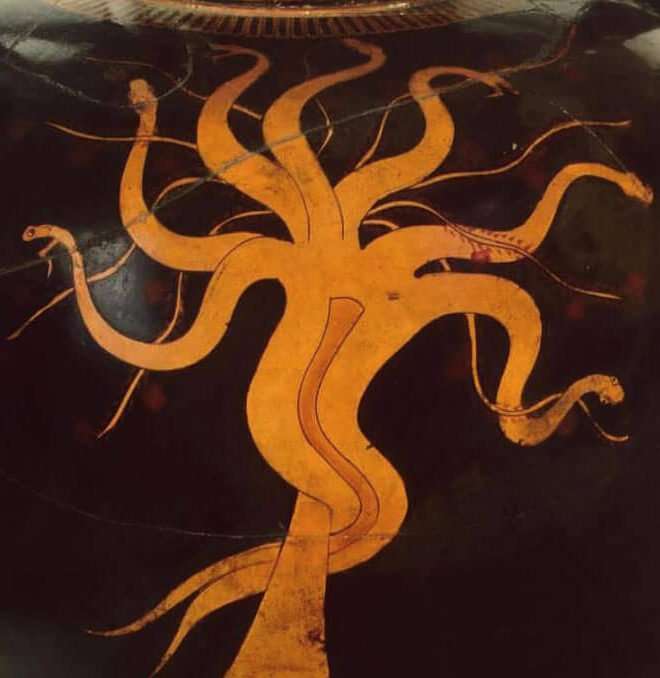
Symbolism and Cultural Significance
In Greek culture, Ladon was more than just a mythical guard; he was a symbol of ultimate guardianship, embodying the fine line between protection and entrapment. His presence in the Garden, an Eden-like utopia, hints at the Greeks’ understanding of the paradox of paradise—simultaneously alluring and forbidden. Ladon’s role also parallels other mythological dragons and serpents, such as the Python guarded at Delphi, symbolizing the primeval forces of nature and the cosmos. These creatures, often seen as gatekeepers to sacred or forbidden realms, reflect the ancient Greeks’ reverence for the unknown and the powerful forces they believed controlled their world. Ladon, through his myth, becomes a critical piece in the mosaic of Greek mythology, representing the eternal struggle between mortal ambitions and divine order.
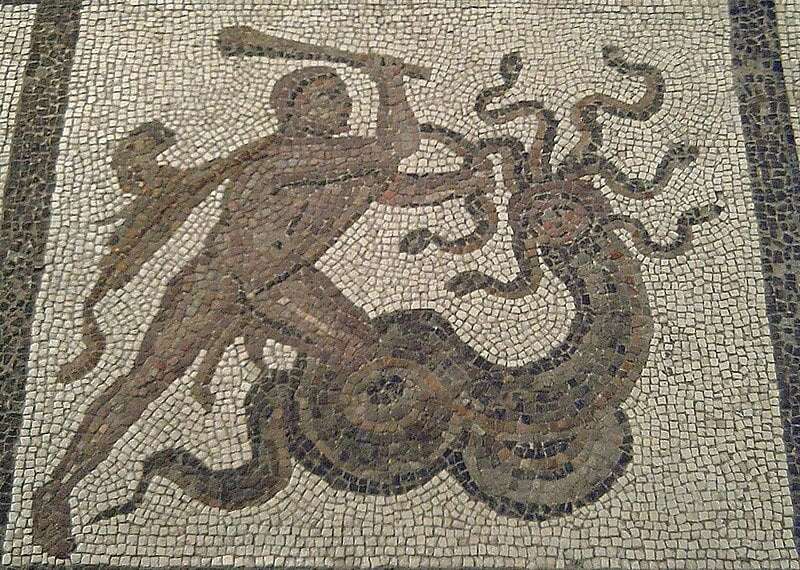
2. The Myth of Ladon
The Garden of the Hesperides
The Garden of the Hesperides, a mythic orchard in the far west of the Greek world, was famed for its divine golden apples, a wedding gift from Gaia to Hera. This garden, often depicted as a paradisiacal realm, symbolized immortality and divine favor. It was here that Ladon’s narrative intertwined with the Hesperides, nymphs entrusted with the care of this celestial orchard. The Hesperides, daughters of Atlas, not only nurtured the garden but also sang melodious songs, creating an ambiance of ethereal beauty. Their connection with Ladon was symbiotic; while they tended to the garden, Ladon’s fearsome presence ensured the safeguarding of its precious fruits from mortals and gods alike, underscoring the sacredness of the garden.
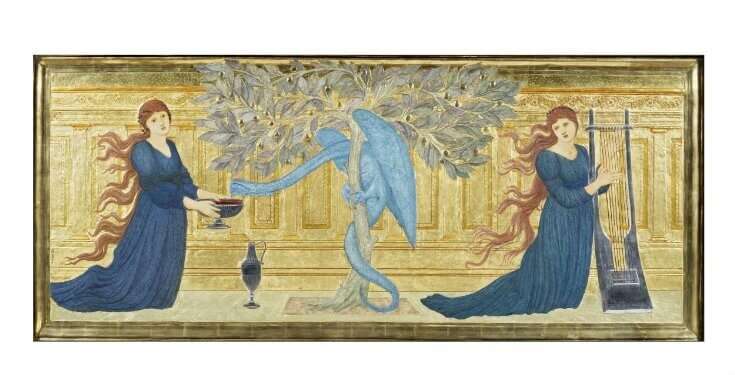
Ladon’s Role and Characteristics
Ladon, often described as a multi-headed dragon, radiated both grandeur and terror. His physical attributes, including his enormous size, the hypnotic gaze of his eyes, and the lethal venom of his breath, made him a formidable guardian. Beyond his physical prowess, Ladon’s role as the protector of the golden apples was emblematic of the guardianship of divine secrets and heavenly treasures. His presence in the garden was not merely as a deterrent but as a representation of the boundary between the mortal world and the divine, a boundary not to be crossed lightly.
The Tale of Heracles and the Golden Apples
One of the most celebrated tales involving Ladon is his encounter with Heracles (Hercules in Roman mythology), during the hero’s eleventh labor. Tasked with retrieving the golden apples, Heracles faced the challenge of overcoming Ladon. Various versions of the myth depict different outcomes – in some, Heracles slays Ladon; in others, he cunningly persuades Atlas to retrieve the apples for him. This tale has been interpreted in numerous ways, often seen as a metaphor for overcoming insurmountable challenges, the interplay between cunning and strength, and the hero’s journey towards immortality. The variations in the narrative across different sources reflect the richness and complexity of Greek mythology, where one story can have multiple layers and meanings.
3. Comparative Mythology
Ladon in Context with Other Mythological Creatures
Ladon’s figure in Greek mythology finds parallels in numerous cultures, illustrating the ubiquity of dragon-like creatures across the world’s mythologies. For instance, the Norse ‘Nidhogg,’ a dragon gnawing at the roots of Yggdrasil, the world tree, echoes similar themes of guardianship and the cosmic balance. Similarly, in Eastern mythology, dragons are revered as symbols of power and wisdom, such as the Chinese dragon, a benevolent guardian of treasures and bringer of rain. These universal motifs in dragon myths—guardianship, power, wisdom, and the dichotomy of creation and destruction—resonate across different cultures, suggesting a collective human fascination with these majestic creatures. The recurring theme of dragons guarding precious objects or knowledge underscores a shared mythological understanding of dragons as custodians of something beyond human reach, be it physical treasures or metaphysical truths.
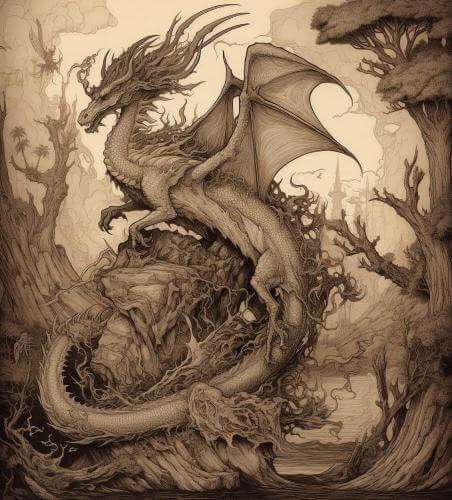
Modern Interpretations and Influence
In contemporary literature and media, Ladon’s legacy continues to inspire, albeit with modern reinterpretations. His character has been adapted in various forms, from fantasy novels to video games, often embodying the classic trope of a dragon guarding a treasure. However, modern portrayals sometimes diverge from the traditional menacing guardian archetype, presenting Ladon with more nuanced characteristics, such as wisdom, nobility, or even vulnerability. This evolution reflects the changing perceptions of mythical creatures in contemporary culture, where ancient myths are reimagined to resonate with modern themes of complexity, moral ambiguity, and a deeper exploration of mythical figures beyond their traditional roles. Ladon’s adaptation into various media also highlights the enduring appeal of mythical creatures and the timeless nature of the stories they inhabit, continually evolving and acquiring new meanings in the collective human imagination.
4. Critical Analysis and Unique Insights
Scholarly Perspectives on Ladon
Scholars of mythology and historians offer diverse interpretations of Ladon’s myth, contributing to a rich tapestry of academic thought. Some experts view Ladon as a representation of natural forces, embodying the chaos and unpredictability of the world the Greeks sought to understand and categorize. Others see him as a symbol of the challenges heroes must overcome to achieve greatness, a literal and metaphorical guardian of a threshold. Debates in academic circles also focus on Ladon’s origins, with some proposing links to ancient Near Eastern mythology, suggesting a cross-cultural exchange of mythological motifs. These scholarly perspectives not only enrich our understanding of Ladon but also highlight the multi-layered nature of mythology, where each creature can be a vessel for various interpretations and symbolisms, reflecting the complexity of the human psyche and cultural evolution.
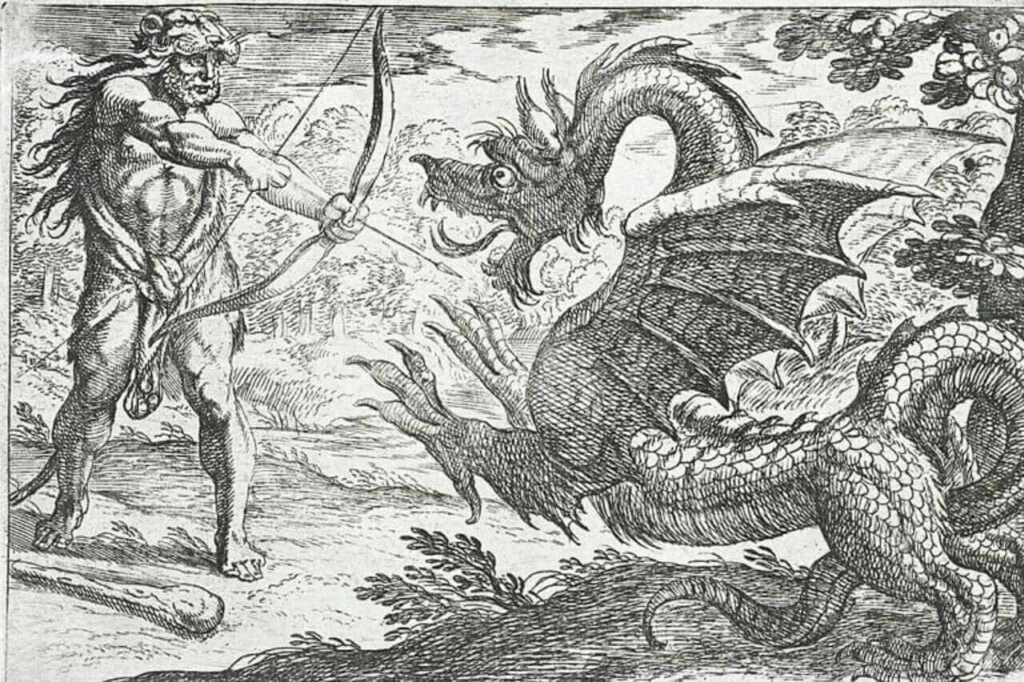
Thematic Analysis
The story of Ladon encompasses themes of guardianship, immortality, and heroism. Ladon serves as a guardian, symbolizing formidable obstacles on the path to one’s goals, emphasizing the value of protection and the challenges of attainment. His connection to immortality, through the golden apples, reflects the ancient Greeks’ pursuit of eternal life and the divine. Ladon’s encounters with heroes like Heracles are integral to the hero’s journey, representing a crucial challenge for their progression. Beyond a mythical creature, Ladon serves as a narrative device encapsulating Greek culture and thought. Analyzing his story within Greek mythology offers insights into their worldview, values, and the delicate balance between the human and the divine.
5. Conclusion
In sum, the legend of Ladon, the dragon guardian of the golden apples in Greek mythology, is a multifaceted narrative that intertwines themes of guardianship, challenge, and the divine. From his origins in ancient texts to his symbolic role in Greek culture and comparative mythology, Ladon embodies the complexities and depth of mythological storytelling. His story, evolving through scholarly interpretations and modern adaptations, highlights the enduring nature of myth in reflecting and shaping human understanding across ages. Ladon’s legacy, transcending the bounds of ancient Greece, continues to resonate in contemporary culture, illustrating the timeless allure of mythical creatures in human imagination and the perpetual quest to explore the unknown and the extraordinary.
